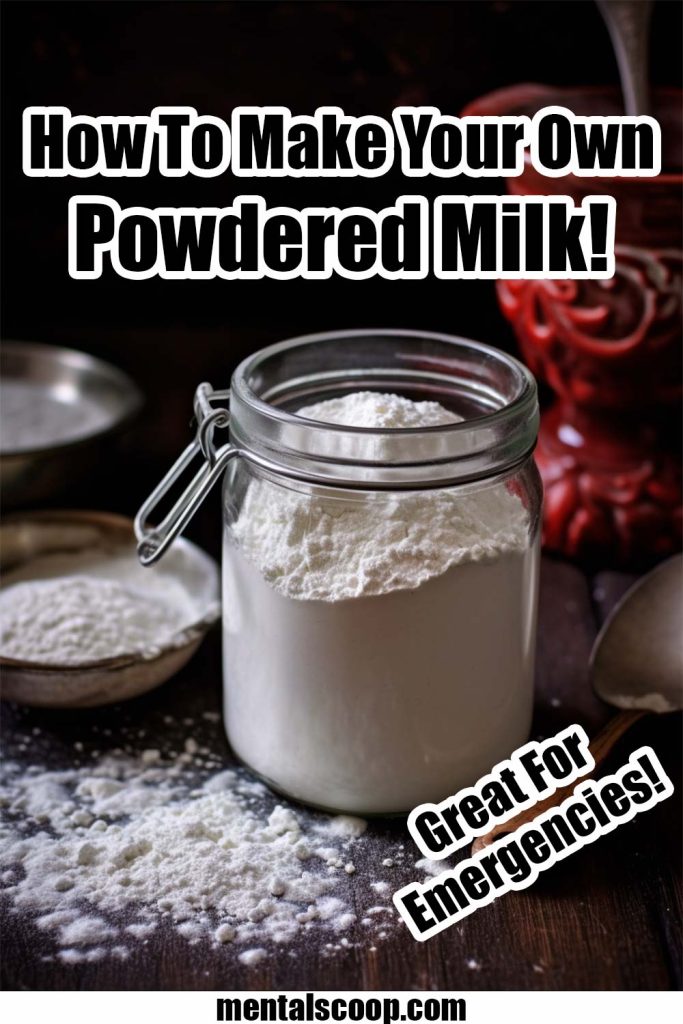How To Make Your Own Powdered Milk!

In today’s fast-paced world, convenience often takes precedence over quality, especially when it comes to food. However, there are still those who prefer to create their own pantry staples, ensuring control over the ingredients and overall quality.
One such staple is powdered milk, which has a wide range of culinary applications. Making your own powdered milk not only gives you the freedom to select the best ingredients but also saves money in the long run.
In this article, we will explore a step-by-step process to make homemade powdered milk, providing you with a versatile and delicious pantry staple.
Understanding Powdered Milk
Before diving into the process, let’s first understand what powdered milk is. Powdered milk, also known as dry milk or milk powder, is a dehydrated form of milk. It is made by removing the moisture from fresh milk, resulting in a fine powder that can be reconstituted with water to create liquid milk. Powdered milk is a valuable ingredient in many recipes and is a convenient option for those who don’t have regular access to fresh milk.
Selecting the Right Milk
The quality of your homemade powdered milk largely depends on the type of milk you choose. Whole milk, skim milk, or non-fat milk can all be used to make powdered milk, depending on your preference. However, it is essential to select high-quality milk that is free from additives and preservatives. Opt for organic or locally sourced milk for the best results.
Preparing the Milk
To make powdered milk, you need to remove the moisture from fresh milk. Here’s a simple step-by-step process to follow:
Start by pouring the milk into a large, shallow pan. It is essential to use a pan with a large surface area to facilitate quick evaporation.
Heat the milk over low heat, stirring constantly to prevent it from scorching or forming a skin on the surface. The milk should be heated until it reaches a temperature of 140°F (60°C).
Once the milk reaches the desired temperature, remove the pan from the heat and let it cool for a few minutes. This step allows the milk to form a thin layer of skin on the surface.
Gently skim off the skin from the surface using a slotted spoon or spatula. Discard the skin.
Next, transfer the milk to a food dehydrator or a baking sheet lined with parchment paper. Spread it evenly to ensure uniform drying.
Place the milk in a well-ventilated area or set the food dehydrator to a low temperature (around 130°F or 54°C) to facilitate drying. The drying process may take anywhere from 6 to 12 hours, depending on the equipment used and the humidity level.
Once the milk is completely dried, it should feel brittle to the touch. Break it into smaller pieces and transfer it to a blender or food processor.
Blend the dried milk until it turns into a fine powder. You may need to do this in batches, depending on the capacity of your blender or food processor.
Finally, store the homemade powdered milk in an airtight container in a cool, dry place. It can be stored for up to 6 months.
Utilizing Homemade Powdered Milk
Now that you have your own powdered milk, let’s explore some of its versatile uses:
a) Baking:
Powdered milk can be used as a substitute for fresh milk in various baking recipes, including bread, cakes, cookies, and pancakes. It adds a creamy texture and enhances the overall flavor.
b) Hot and Cold Beverages:
Reconstitute powdered milk with water to create a glass of refreshing milk or use it as a base for hot beverages like tea, coffee, or hot chocolate.
c) Smoothies and Shakes:
Incorporate powdered milk into your favorite smoothie or milkshake recipes to boost the nutritional content and add a creamy texture.
d) Soups and Sauces:
Powdered milk can be used as a thickening agent in soups, sauces, and gravies. It imparts a subtle dairy flavor while enhancing the consistency.
e) Emergency Food Storage:
Homemade powdered milk is an excellent addition to your emergency food storage. It provides a long-lasting, nutritious alternative to fresh milk when access is limited.

More interesting articles you may be interested in reading:

How To Remove A Tree Stump Painlessly
10 Vital Home Maintenance Tasks You’ll Regret If You Forget
See How Much Propane Is Left In A Tank With No Gauge
Thanks for reading and be sure to share this info with your friends using the social share buttons below.
Talking about social stuff, consider liking our Facebook page to keep up to date with our articles. Check out our other articles for more mental scoops!
